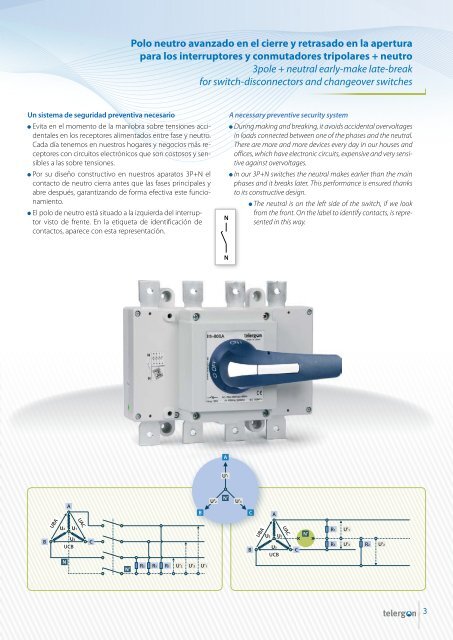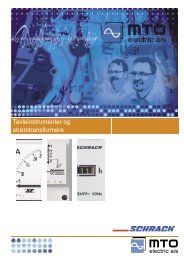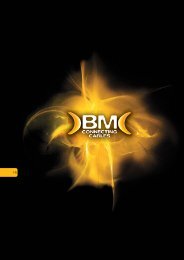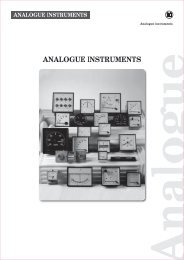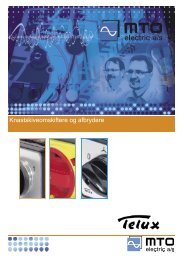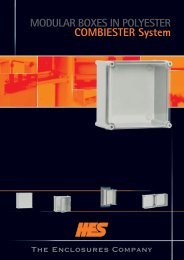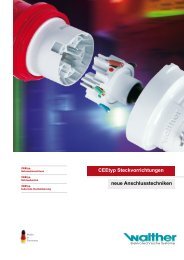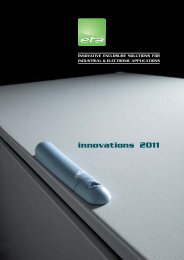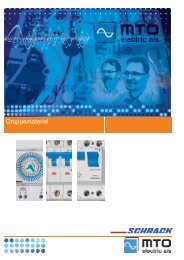Interruptores seccionadores Switch - disconnectors - MTO electric A/S
Interruptores seccionadores Switch - disconnectors - MTO electric A/S
Interruptores seccionadores Switch - disconnectors - MTO electric A/S
You also want an ePaper? Increase the reach of your titles
YUMPU automatically turns print PDFs into web optimized ePapers that Google loves.
Polo neutro avanzado en el cierre y retrasado en la apertura<br />
para los interruptores y conmutadores tripolares + neutro<br />
3pole + neutral early-make late-break<br />
for switch-<strong>disconnectors</strong> and changeover switches<br />
Un sistema de seguridad preventiva necesario<br />
Evita en el momento de la maniobra sobre tensiones accidentales<br />
en los receptores alimentados entre fase y neutro.<br />
Cada día tenemos en nuestros hogares y negocios más receptores<br />
con circuitos electrónicos que son costosos y sensibles<br />
a las sobre tensiones.<br />
Por su diseño constructivo en nuestros aparatos 3P+N el<br />
contacto de neutro cierra antes que las fases principales y<br />
abre después, garantizando de forma efectiva este funcionamiento.<br />
El polo de neutro está situado a la izquierda del interruptor<br />
visto de frente. En la etiqueta de identificación de<br />
contactos, aparece con esta representación.<br />
A necessary preventive security system<br />
During making and breaking, it avoids accidental overvoltages<br />
in loads connected between one of the phases and the neutral.<br />
There are more and more devices every day in our houses and<br />
offices, which have electronic circuits, expensive and very sensitive<br />
against overvoltages.<br />
In our 3P+N switches the neutral makes earlier than the main<br />
phases and it breaks later. This performance is ensured thanks<br />
to its constructive design.<br />
The neutral is on the left side of the switch, if we look<br />
from the front. On the label to identify contacts, is represented<br />
in this<br />
N<br />
way.<br />
N<br />
A<br />
U’1<br />
A<br />
B<br />
U’2<br />
N’<br />
U’3<br />
C<br />
A<br />
UBA<br />
B<br />
U2 U1<br />
U3<br />
UCB<br />
N<br />
UAC<br />
C<br />
N’<br />
R2 R3 R1 U’2 U’3 U’1<br />
B<br />
UBA<br />
U2 U1<br />
U3<br />
UCB<br />
UAC<br />
C<br />
N’<br />
R1 U’1<br />
R3<br />
U’3<br />
R2 U’2<br />
3


